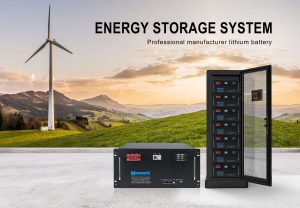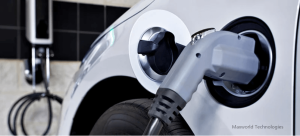LFP Battery
LFP battery (Lithium Ferrophosphate or Lithium Iron Phosphate) is currently our favourite battery for a multitude of reasons. They are substantially lighter and last far longer than lead-acid batteries, with a projected life of over 3000 cycles (8+ years).

Maxworld power Technologies Co., Ltd. is a wholly-owned subsidiary of Spaceflight Power Supply (Longnan) Co. Ltd., which was founded in 1994. With autonomous research and development in cells and BMS, we specialize on lithium iron phosphate batteries. We are dedicated to providing customers with one-stop lithium battery solutions and services, thanks to our expertise to integrate the whole industrial chain. Energy storage and light power are two areas where our high-quality products are commonly used.
Our commitment to quality, innovation, and revolutionizing the lithium battery business begins at the top and pervades all we do. We are confident that Maxworld power can assist you in moving your business forward via hard work and humility, brilliant staff trained to the highest industry standards, and real care and concern for our partners.

What's the advantages and disadvantages of LFP battery
Advantages
(1) Extended cycle life:
The predicted cycle life of these LFP battery is 3000–10,000 cycles. This is the effect of daily deep riding over the past 8 to 20 years. In our tropical systems, lead-acid batteries have a normal life of 1500 cycles. When a lead-acid battery is only cycled to 35 percent depth of discharge (DOD) and stored at 75 degrees Fahrenheit, its maximum cycle life is roughly 3500 cycles. LFP battery is more efficient, with a 98 percent efficiency rating. For example, there is 100 amp-hours in a LFP battery, you can discharge around 98 amp hours out of it. Only around 80% of lead-acid batteries (flooded, GEL, and AGM) are efficient. This means that if you put 100 amp-hours into a lead-acid battery, you’ll get around 80 amp hours back.
(2) Shorter absorption time:
To completely charge the LFP battery, they only take for a few minutes to achieve the absorbed voltage.
The absorption time for lead-acid batteries is between 4 and 12 hours. On solar electric systems, this can be difficult to do.
(3) Not damaged by Partial State of Charge:
LFP battery does not require to reach 100% State of Charge on a regular basis, hence they are not affected by the partial State of Charge.
Lead-acid batteries must be charged to 100% SOC on a regular basis. If not, they will deteriorate. This may result in the need for a generator during the rainy season, which, given the 4-hour Absorb time, might result in a significant amount of fuel consumption.
(4) Long shipment periods, furloughs, and extended absences:
Under normal circumstances, these LFP battery will not suffer from long shipping times. These batteries can also be left unused for up to a year without needing to be recharged.
After only three months in transit, lead-acid batteries will degrade. Lead-acid batteries can be damaged by furloughs and extended absences.
(5) High–temperature operation:
These LFP battery can function at temperatures ranging from –20 to 65 degrees Fahrenheit with negligible deterioration.
At increasing temperatures, the cycle life of lead-acid batteries degrades faster. For every 15 degrees above 75 degrees, the cycle life of a lead-acid battery is cut in half.
(6) Lightweight:
A typical LFP battery bank 5 may weigh 150 pounds despite weighing only 30 pounds apiece.
A single lead-acid battery can weigh up to 180 pounds, while a battery bank can weigh up to 650 pounds.
The LFP battery is using the Lithium iron phosphate chemistry. It is one of the safest lithium battery chemistry available and does not suffer from thermal runaway. LFP batteries are available at three voltages: 12 V, 24 V, and 48 V.

Disadvantage
(1) Price: An LFP battery will cost around twice as much as an AGM battery of comparable quality.
1.The typical return on investment is 5 years when an AGM battery needs to be replaced.
2. Lead acid batteries may be a better alternative if you only require them for 4 to 6 years.
Why the LFP has such a high cost? LFP batteries are typically more expensive up front, but they are less expensive in the long run because they last so long. They are more expensive up front due to the higher cost of the materials needed to construct them. However, individuals continue to prefer them to alternative batteries. Why? Because LFP has a number of benefits over other types of batteries. They’re far lighter than lead-acid and many other types of batteries, for example. They’re also significantly safer, last longer, and don’t need to be maintained.
(2) Low reserve capacity:
1.Due to cost and expected cycle depth, LFP battery will have a very little reserve capacity (about 20%) built into the bank. Offgrid Tech aims for a daily depth of discharge (DOD) of 65 percent (discharging down to 35 percent State of Charge [SOC] daily). There is very little power left in reserve as a result of this. We do not advise draining these LFP batteries below 85 percent DOD (15 percent SOC). This may need the usage of a generator or the reduction of loads on a more frequent basis.
2. Lead-acid battery banks are built to have a reserve capacity (about 45 percent ). A typical lead-acid battery for a solar system will be discharged to 35 percent DOD on a daily basis (or 65 percent full SOC). This leaves a 65 percent cushion in the batteries. Lead-acid batteries can be drained up to 80% DOD on rare occasions (20 percent SOC).
(3) Damaged if overcharged or undercharged:
1. An LFP battery can be damaged by high voltage (15 volts or above).
2. Overcharging an LFP battery to the point where it shuts off can also be harmful.
3. It is critical that an LFP battery is never overcharged (use high-quality equipment) and that the batteries are never allowed to go entirely depleted (monitor the voltage and charge via generator when low). We do not advocate leaving BattleBorn batteries connected to loads but unsupervised for more than two weeks.
(4) It’s possible that it’ll be more vulnerable to lightning harm.
1. Each LFP battery has highly sensitive circuits. Voltage spikes and surges from adjacent lightning strikes have the ability to destroy these. To help limit this danger, surge suppression is integrated inside the battery combiner box.
2.Unless the charging equipment is broken and the batteries do not receive adequate charge, lead acid batteries have a considerably lower likelihood of being damaged by a close lightning strike.
LFP Batteries vs Non- Lithium Batteries
When LFP is compared against lithium ion, LFP wins out. But, in comparison to other rechargeable batteries, how do LFP batteries fare?
Lead-acid Batteries
Lead-acid batteries may appear to be a good deal at first, but they will cost you more in the long term. This is owing to the fact that they require more frequent replacement and require constant upkeep. A LFP battery lasts 2-4 times longer and doesn’t need to be maintained.
GEL Batteries
Gel batteries, like LFP batteries, do not require regular recharging. They won’t lose their charge while being stored, either. What’s the difference between a LFP battery and a gel battery? The charging procedure is a significant factor. Gel batteries take a long time to charge. To avoid destroying them, you must disconnect them once they are fully charged.
AGM Batteries
AGM batteries will do a lot of damage to your wallet, and they’re also at risk of becoming damaged if they’re drained below 50% capacity. It could also be difficult to keep them in good shape. Lithium batteries made of LFP can be fully discharged without causing harm.
Application of LFP Battery
LFP battery has been found to be applicable in a wide range of applications. A few examples are as follow:
Less charging time and greater runtime mean more time on the water for fishing boats and kayaks. Less weight allows for smoother handling and increased speed during that high-stakes fishing event.
There is no dead weight to slow you down on mopeds or mobility scooters. For spontaneous excursions, charge to less than full capacity to avoid harming your battery.
Solar power setups include the following: Carry light LFP batteries with you to gather the sun’s energy wherever life takes you (even if it’s up a mountain and off the grid).
Commercial use: These lithium batteries are the safest and hardest on the market. As a result, they’re suitable for industrial uses like floor machines, liftgates, and other similar goods.
There’s much more: Lithium iron phosphate batteries also provide power to a variety of other devices. This category includes emergency lighting, flashlights, solar panels, radio equipment, , and a variety of other goods.
A Brief History of the LFP Battery
Who invented the LFP battery? John B. Goodenough and Arumugam Manthiram. Lithium battery chemistry were discovered by them first. But the anode materials of lithium-ion batteries are not very suitable. This is due to their proclivity for early short-circuiting.
Cathode materials have been revealed to be better replacements for lithium-ion batteries, according to scientists. This is particularly apparent in LFP battery models. Fast forward, boosting stability and conductivity — in other words, improving everything – and poof! This is how the LFP battery is born.
Rechargeable LFP batteries are now widely available. These batteries are utilized in a variety of applications, including boats, solar systems, automobiles, mobility scooters, solar panels and more. Cobalt-free LFP batteries are less expensive than most of their competitors (over time). It has a longer shelf life and is non-toxic. But we’ll get back to that later. The LFP battery has a promising future ahead of it.











